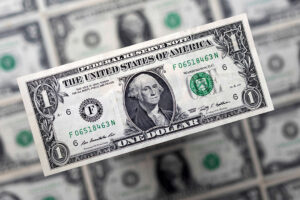THE PHILIPPINES’ outstanding external debt stood at a record $128.7 billion as of end-March, the Bangko Sentral ng Pilipinas (BSP) reported.
Data from the central bank showed that external debt rose by 8.3% from $118.8 billion in the same period a year ago. It was also higher by 2.6% from $125.4 billion in the fourth quarter of 2023.
External debt includes all types of borrowings by residents from nonresidents.
“The rise in the debt level was due to resident entities’ net availments of $2.5 billion, largely by private sector banks which raised $2.1-billion funds from offshore creditors for general corporate expenditures, refinancing of borrowings and liquidity purposes,” the BSP said.
Net availments by public sector entities amounted to $331 million as of end-March. These were driven by the National Government (NG) funding for programs that seek to “enhance tax system efficiency and foster an enabling environment for digital technology adoption.”
The Department of Finance has been seeking ways to improve tax administration and collection.
“Positive investor sentiment also contributed to the growth in the debt stock as investments in Philippine debt securities by nonresidents rose by $1.2 billion,” the BSP said.
“In addition, prior periods’ adjustments also increased the country’s debt level by $551 million. The negative $927-million foreign exchange (FX) revaluation of borrowings denominated in other currencies amid US dollar appreciation partially tempered the rise in the debt stock.”
The peso weakened by P0.04 to P56.24 against the dollar as of end-March from its P56.20 close as of end-February.
Meanwhile, the BSP said that the year-on-year increase in external debt was due to total net availments worth $8.9 billion.
Of the total net availments, $5.4 billion were from borrowings by private sector entities, mainly banks.
“The net acquisition of Philippine debt securities by nonresidents of $1.5 billion and prior years’ adjustments of $1 billion further contributed to the year-on-year increase,” it said.
“The negative $1.6-billion FX revaluation of borrowings denominated in other currencies partially tempered the rise in the debt stock,” it added.
This brought external debt as a percentage of gross domestic product (GDP) at 29% as of end-March, up from 28.7% in fourth quarter and 28.9% in the same period in 2023.
The debt service ratio, or principal and interest payments as a fraction of export receipts and primary income, eased to 3% in the first quarter from 4.3% in the year-ago period.
“The external debt-to-GDP ratio is still relatively lower compared to other Asian countries amid a more conservative stance on foreign borrowings due to forex risks involved,” Rizal Commercial Banking Corp. Chief Economist Michael L. Ricafort said in a Viber message.
BSP data showed that private sector debt increased by 4.7% to $49.8 billion at end-March from $47.6 billion in the previous quarter, driven by bond issuances by local private banks.
Meanwhile, public sector debt inched up by 1.4% to $78.9 billion as of end-March from $77.8 billion in the fourth quarter of 2023.
The bulk or 91.6% of public sector obligations were from NG borrowings while the rest came from government-owned and -controlled corporations, government financial institutions and the BSP.
“The increase in public sector borrowings was driven by the net acquisition by nonresidents of public sector debt securities aggregating to $1.6 billion; and the $331-million net availments, largely by the NG for its various projects/programs.”
As of end-March, the Philippines’ top creditor countries were Japan ($15.2 billion), the United Kingdom ($4.6 billion) and the Netherlands ($3.9 billion).
Loans from multilateral sources amounted to $34.8 billion, while loans from bilateral creditors stood at $15.9 billion. These loans accounted for 39.4% of the total external debt.
This was followed by bonds ($42.2 billion or 32.8%) and obligations to foreign banks and other financial institutions ($28.5 billion or 22.1%), while the rest ($7.3 billion or 5.6%) were owed to suppliers and foreign exporters.
For the coming months, Mr. Ricafort said that external debt could continue to rise “amid the need to finance the budget deficit and to diversify funding sources to include some foreign commercial borrowings in US dollars, yen, euro, and other currencies.”
Latest data from the Treasury showed that the NG’s budget deficit widened to P229.9 billion in the first four months.
Mr. Ricafort also noted the global bond issuance in May would drive up the total external debt stock.
The Philippine government raised $2 billion from its issuance of the dual-tranche 10- and 25-year fixed-rate dollar bonds, its first global bond sale for the year. — Luisa Maria Jacinta C. Jocson
